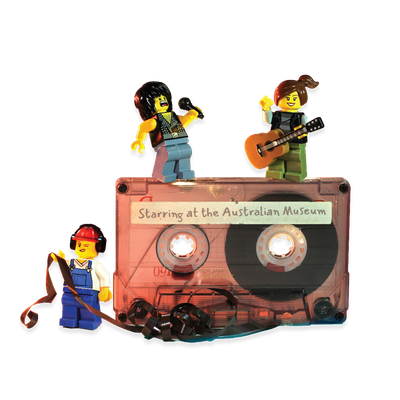Your search returned 2817 results
By Page Type
By Tag
- fish (966)
- blog (696)
- fishes of sydney harbour (401)
- First Nations (299)
- Blog (236)
- AMRI (169)
- archives (164)
- Eureka Prizes (146)
- Aboriginal and Torres Strait Islander (135)
- insect (126)
- Ichthyology (124)
- geoscience (109)
- minerals (102)
- climate change (99)
- podcast (94)
- Fish (91)
- Anthropology (89)
- International collections (80)
- Minerals Gallery (78)
- wildlife of sydney (78)
- Labridae (77)
- frog (74)
- gemstone (70)
- photography (66)
- history (64)
- Mollusca (60)
- gem (59)
- staff (59)
- Birds (56)
- Gems (56)
- Indonesia (56)
- education (56)
- shark (55)
- AMplify (54)
- people (53)
- earth sciences (50)
- exhibition (50)
- past exhibitions (50)
- Gobiidae (48)
- sustainability (46)
- Pomacentridae (45)
- Serranidae (44)
- lifelong learning (42)
- science (42)
- Earth and Environmental Science (41)
- Syngnathidae (41)
- Ancient Egypt (40)
- Bali (40)
- bird (40)
- dangerous australians (40)
-
Homo antecessor
https://australian.museum/learn/science/human-evolution/homo-antecessor/This species name is highly debated with many considering the remains to be Homo heidelbergensis. Whatever species they come from, these fossils are the oldest Homo found in Europe.
-
Paranthropus genus
https://australian.museum/learn/science/human-evolution/paranthropus-species/The genus or group Paranthropus currently includes three species, P. boisei, P. robustus, and P. aethiopicus. They are collectively known as the ‘robusts’ because of their extremely large jaws and molar teeth. They are our distant ‘cousins’ rather than our direct relatives.
-
Australopithecus afarensis
https://australian.museum/learn/science/human-evolution/australopithecus-afarensis/This species is one of the best known of our ancestors.
-
Australopithecus anamensis
https://australian.museum/learn/science/human-evolution/australopithecus-anamensis/A. anamensis is the earliest known australopithecine and lived over 4 million years ago.
-
Homo heidelbergensis
https://australian.museum/learn/science/human-evolution/homo-heidelbergensis/These humans evolved in Africa but by 500,000 years ago some populations were in Europe. They lived and worked in co-operative groups, hunted large animals and made a variety of tools including stone hand axes and wooden spears set with stone spearheads.
-
Homo erectus
https://australian.museum/learn/science/human-evolution/homo-erectus/Homo erectus is now one of the better known of our human relatives with over 40 specimens excavated from Java and China.
-
Australopithecus africanus
https://australian.museum/learn/science/human-evolution/australopithecus-africanus/This species was the first of our pre-human ancestors to be discovered, but was initially rejected from our family tree because of its small brain. This opinion changed when new evidence showed this species had many features intermediate between apes and humans.
-
How have we changed since our species first appeared?
https://australian.museum/learn/science/human-evolution/how-have-we-changed-since-our-species-first-appeared/Physical and genetic changes have occurred within our species and will continue to occur at a basic level as new genes evolve. However, these changes may not be as dramatic as they were in the past as the situation today does not favour the evolution of a new human species.
-
How do we know how they behaved?
https://australian.museum/learn/science/human-evolution/how-do-we-know-how-they-behaved/An amazing amount of information can be extracted from the artefacts and fossil remains of our ancestors and the fossils of other animals. These can provide information about our ancestors’ lifestyles, technological abilities and even their social interactions.
-
How do we know what their environments were like?
https://australian.museum/learn/science/human-evolution/how-do-we-know-what-their-environments-were-like/Reconstructing the physical environment in which our ancestors lived allows us to gain a greater understanding of their day-to-day lives. Environments on both local and broader scales are greatly affected by climate, so climate change is an important area of study in reconstructing past environments
-
Discover more
2025 Australian Geographic Nature Photographer of the Year
Special exhibition
Free entry
Now open -
Discover more
Unfinished Business
Special exhibition
Free entry
Now open -
Discover more
Wansolmoana
Permanent exhibition
Free entry
Open daily -
Find out more
Burra
Permanent kids learning space
Free entry
10am - 4.30pm![]()
-
Discover more
Minerals
Permanent exhibition
Free entry
Open daily![]()




